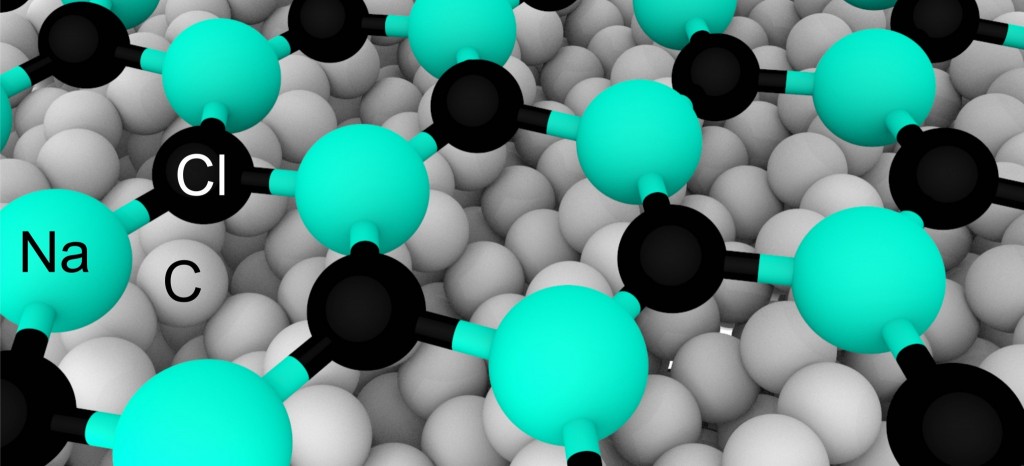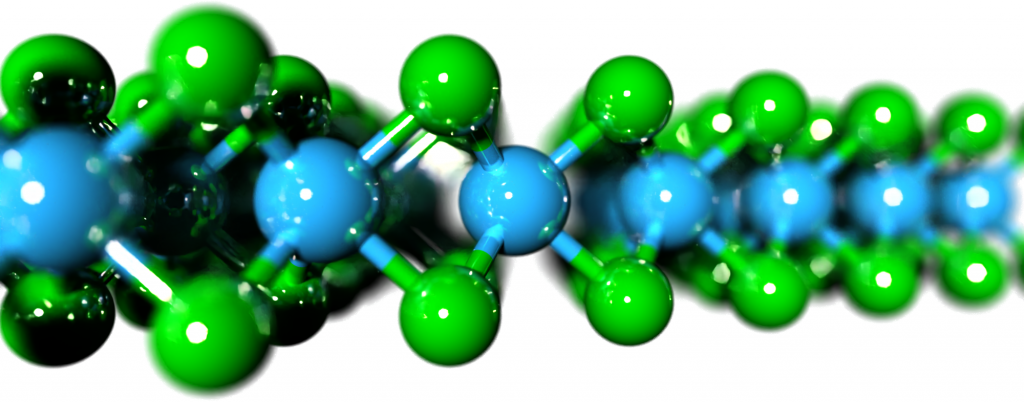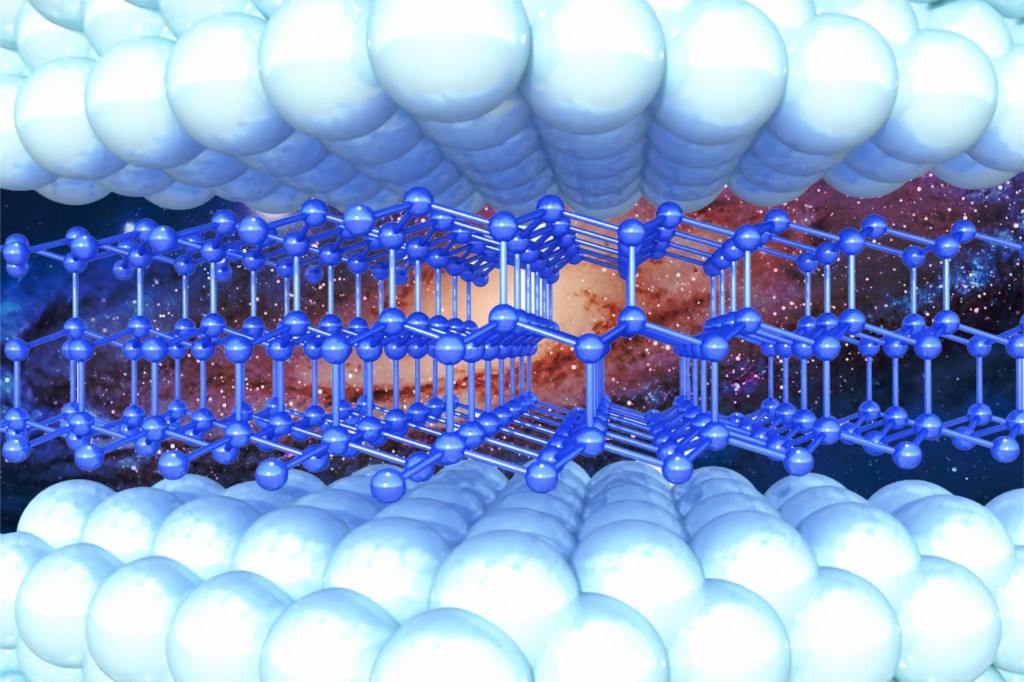Two-dimensional materials
Electronic Properties of Functionalized Diamanes for Field-Emission Displays (ACS Applied Materials and Interfaces, 2023, 15, 12,16317–16326)
Ultrathin diamond films, or diamanes, are promising quasi-2D materials that are characterized by high stiffness, extreme wear resistance, high thermal conductivity, and chemical stability. Surface functionalization of multilayer graphene with different stackings of layers could be an interesting opportunity to induce proper electronic properties into diamanes. Combination of these electronic properties together with extraordinary mechanical ones will lead to their applications as field-emission displays substituting original devices with light-emitting diodes or organic light-emitting diodes. In the present study, we focus on the electronic properties of fluorinated and hydrogenated diamanes with (111), (110), (0001), (101̅0), and (2̅110) crystallographic orientations of surfaces of various thicknesses by using first-principles calculations and Bader analysis of electron density. We see that fluorine induces an occupied surface electronic state, while hydrogen modifies the occupied bulk state and also induces unoccupied surface states. Furthermore, a lower number of layers is necessary for hydrogenated diamanes to achieve the convergence of the work function in comparison with fluorinated diamanes, with the exception of fluorinated (110) and (2̅110) films that achieve rapid convergence and have the same behavior as other hydrogenated surfaces. This induces a modification of the work function with an increase of the number of layers that makes hydrogenated (2̅110) diamanes the most suitable surface for field-emission displays, better than the fluorinated counterparts. In addition, a quasi-quantitative descriptor of surface dipole moment based on the Tantardini–Oganov electronegativity scale is introduced as the average of bond dipole moments between the surface atoms. This new fundamental descriptor is capable of predicting a priori the bond dipole moment and may be considered as a new useful feature for crystal structure prediction based on artificial intelligence.
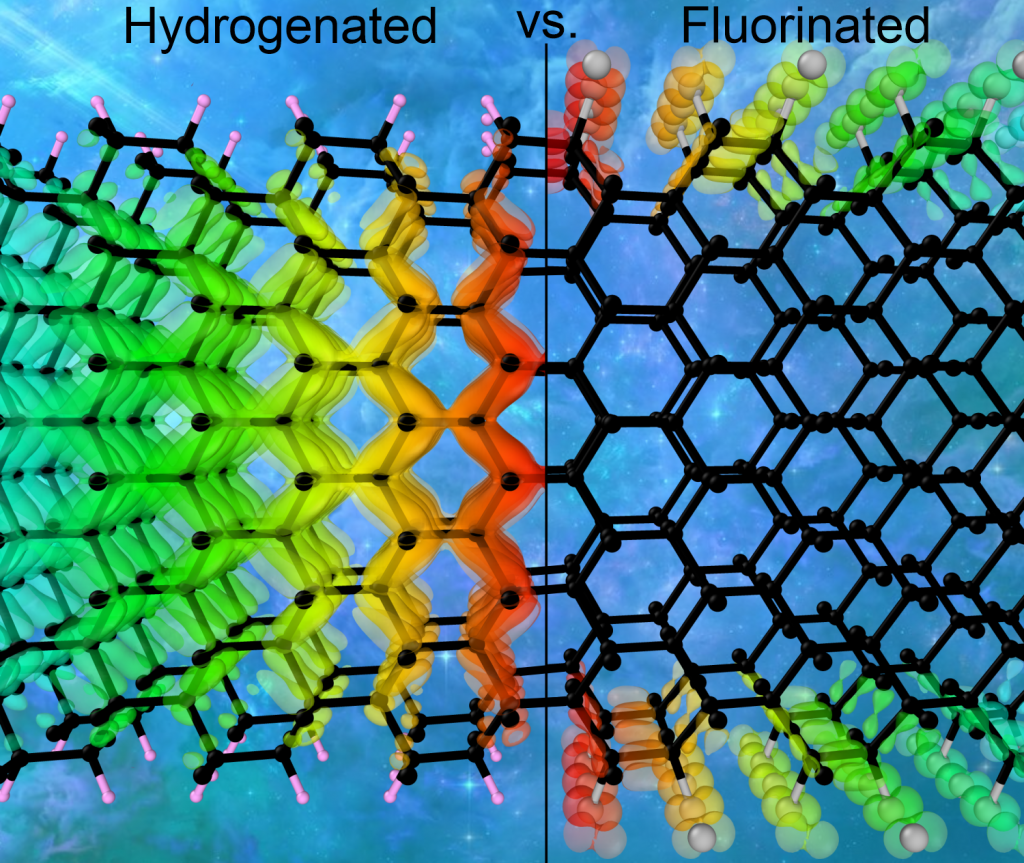
Thermal properties of Moiré diamanes (Membranes, 2022, 12, 10, 925)
Ultra-thin diamond membranes, diamanes, are one of the most intriguing quasi-2D films, combining unique mechanical, electronic and optical properties. At present, diamanes have been obtained from bi- or few-layer graphene in AA- and AB-stacking by full hydrogenation or fluorination. Here, we study the thermal conductivity of diamanes obtained from bi-layer graphene with twist angle θ between layers forming a Moiré pattern. The combination of DFT calculations and machine learning interatomic potentials makes it possible to perform calculations of the lattice thermal conductivity of such diamanes with twist angles θ of 13.2∘, 21.8∘ and 27.8∘ using the solution of the phonon Boltzmann transport equation. Obtained results show that Moiré diamanes exhibit a wide variety of thermal properties depending on the twist angle, namely a sharp decrease in thermal conductivity from high for “untwisted” diamanes to ultra-low values when the twist angle tends to 30∘, especially for hydrogenated Moiré diamanes. This effect is associated with high anharmonicity and scattering of phonons related to a strong symmetry breaking of the atomic structure of Moiré diamanes compared with untwisted ones.
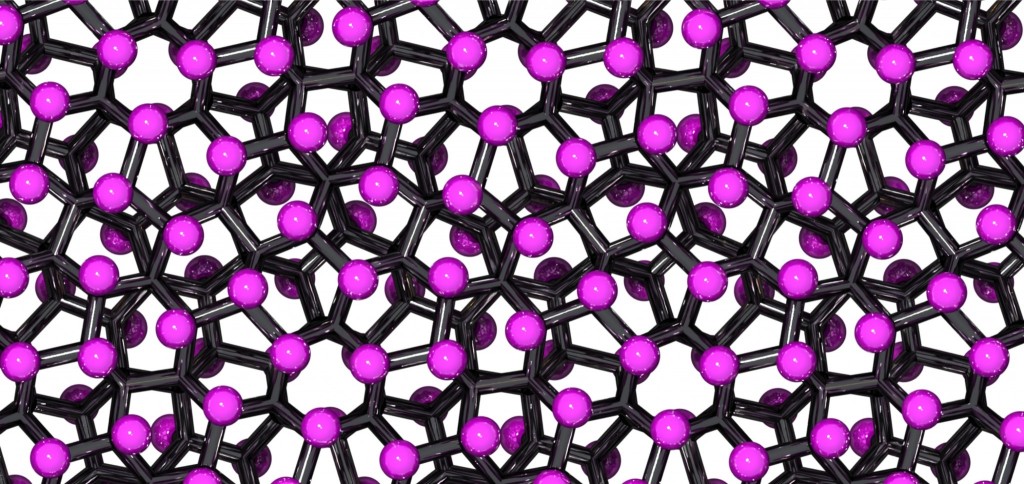
Computational discovery of 2D-Mo3S4 for application in nanoelectronics (Appl. Surf. Sci. 2022, 589, 1, 152971)
The search for electrode materials for two-dimensional structures, particularly for semiconducting H-MoS2, is a significant problem for contemporary materials science. This stimulates interest in metastable structures, which motivates us to look at non-stoichiometric metastable states known as Berthollides. An unbiased evolutionary search for new two-dimensional structures in Mo-S system showed the presence of Mo5S4, Mo3S4, and MoS metastable structures (located near the decomposition line) in the low-sulfur area of phase diagram. The predicted novel Cm-Mo3S4 phase exhibits metallic properties and dynamic stability confirmed by the calculation of phonon dispersion spectra. Its lattice parameters are similar to the semiconducting H-MoS2 phase which makes it possible to use Cm-Mo3S4 as a conducting contact in nanodevices based on MoS2.
Computational design for new gas sendor based on V3S4 monolayer (Nanomaterials 2022, 12 (5), 774)
Novel magnetic gas sensors are characterized by extremely high efficiency and low energy consumption, therefore, a search for a two-dimensional material suitable for room temperature magnetic gas sensors is a critical task for modern materials scientists. Here, we computationally discovered a novel ultrathin two-dimensional antiferromagnet V3S4, which, in addition to stability and remarkable electronic properties, demonstrates a great potential to be applied in magnetic gas sensing devices. Quantum-mechanical calculations within the DFT + U approach show the antiferromagnetic ground state of V3S4, which exhibits semiconducting electronic properties with a band gap of 0.36 eV. A study of electronic and magnetic response to the adsorption of various gas agents showed pronounced changes in properties with respect to the adsorption of NH3, NO2, O2, and NO molecules on the surface.
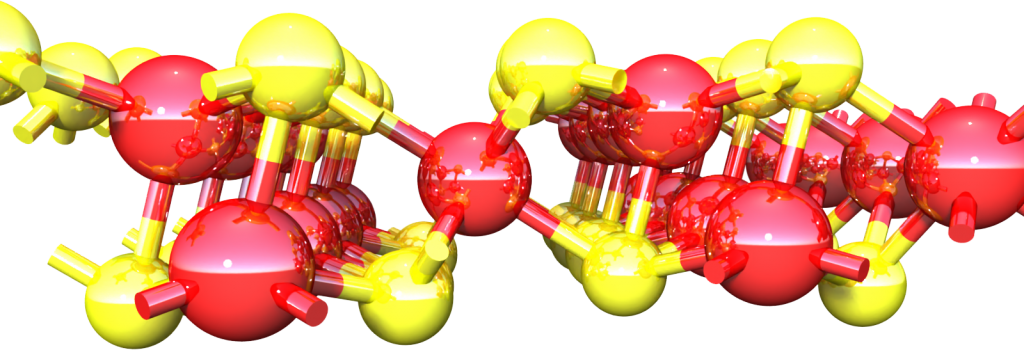
Prediction of quasicrystalline two-dimensional diamond film – diamane quasicrystal (Appl. Surf. Sci. 2022, 572, 15, 151362)
Here we propose the first two-dimensional carbon quasicrystal made entirely of sp3-hybridized atoms, namely diamane quasicrystal. This nanostructure is based on incommensurate lattice of two graphene layers twisted by 30° with respect to each other (well-known graphene quasicrystal) with totally hydrogenated or fluorinated surfaces of bilayer graphene (similar to formation of AB-stacked diamane by means of applying high pressure treatment). We describe in detail the features of atomic structure appearing during the formation of quasicrystal. Thermodynamic stability, electronic and mechanical characteristics in comparison with both periodic approximants and AB-stacked diamanes via DFT and MD methods are studied and discussed. Proposed diamane quasicrystals exhibit unique mechanical properties: they are stiffer and more brittle than AB-stacked diamane. Our study shows that quasicrystalline diamane is a prospective material that opens a new way towards the synthesis of inorganic quasicrystals of various compositions with unique set of physical and chemical properties.
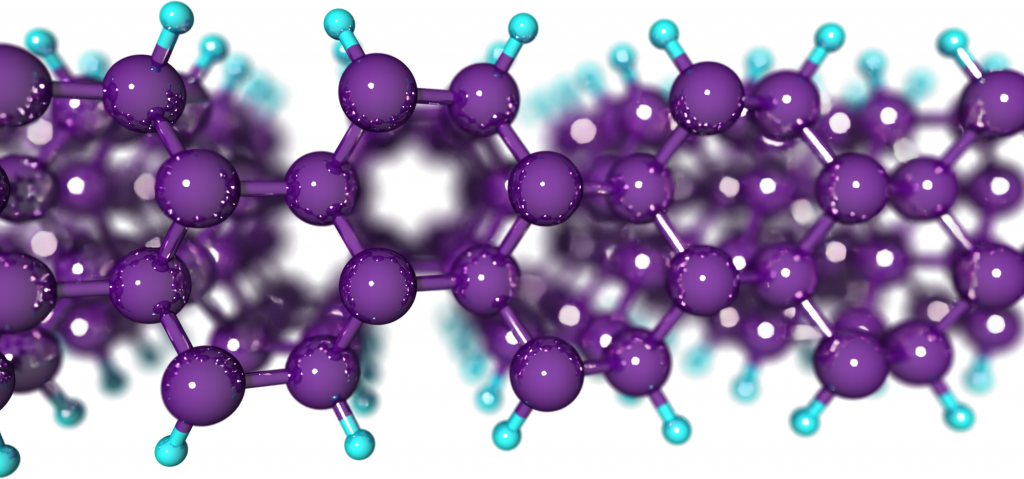
New method to study electronic properties under pressure: case of silicene (ACS Nano 2021, 15, 4, 6861–6871)
To study the possibility for silicene to be employed as a field-effect transistor (FET) pressure sensor, we explore the chemistry of monolayer and multilayered silicene focusing on the change in hybridization under pressure. Ab initio computations show that the effect of pressure depends greatly on the thickness of the silicene film, but also reveals the influence of real experimental conditions, where the pressure is not hydrostatic. For this purpose, we introduce anisotropic strain states. With pure uniaxial stress applied to silicene layers, a path for sp3 silicon to sp3d silicon is found, unlike with pure hydrostatic pressure. Even with mixed-mode stress (in-plane pressure half of the out-of-plane one), we find no such path. In addition to introducing our theoretical approach to study 2D materials, we show how the hybridization change of silicene under pressure makes it a good FET pressure sensor.
Computational prediction and synthesis of exotic 2D NaCl (J. Phys. Chem. Lett. 2020, 11, 10, 3821–3827)
NaCl is one of the simplest compounds and was thought to be well-understood, and yet, unexpected complexities related to it were uncovered at high pressure and in low-dimensional states. Here, exotic hexagonal NaCl thin films on the (110) diamond surface were crystallized in the experiment following a theoretical prediction based on ab initio evolutionary algorithm USPEX. State-of-the-art calculations and experiments showed the existence of a hexagonal NaCl thin film, which is due to the strong chemical interaction of the NaCl film with the diamond substrate.
